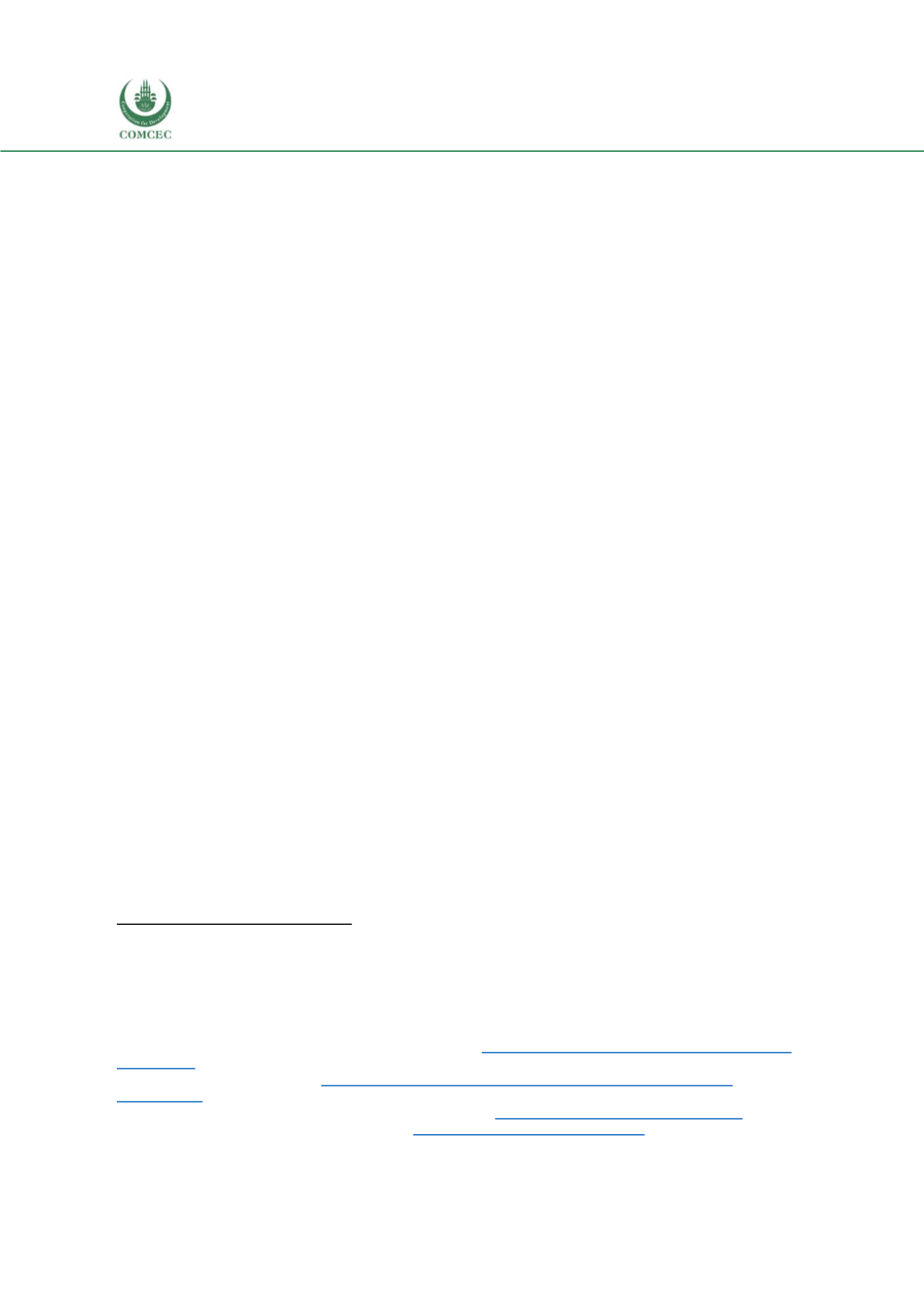

Increasing the Resilience of the Food Systems
In Islamic States in Face of Future Food Crises
134
Poor agricultural infrastructure is compounded by a lack of new technology. A clear example is
spray driers that convert juices, milk, and other liquids into high-shelf-life powders that can be
stored and transported.
516
Ireland, with a population of 4.5 million,
517
has over 22
518
spray
driers in its dairy industry. By contrast, Pakistan has only 6
519
spray driers for its population of
over 200million.
520
Consider that Pakistan has 250
521
varieties ofmangowith approximately 25
to 30
522
in commercial production; the potential for exports of mango-flavored powders is
substantially overlooked.
Second, the OIC has conducted limited research relative to global benchmarks, which
fundamentally inhibits innovation and developments in agriculture. The OIC published 140,497
academically significant articles in 2015, covered by Science Citation Index, Social Science Index,
and Human Citations Index. This is far below the U.S. (386,793) and China (282,696). The quality
of OIC institutions also needs improvement, with none of the OIC universities listed among the
top 100 world universities by the Time Higher
523
or QS international ranking methods.
524
The OIC has 661 researchers per million people on average. This is well behind the world
average of 1,643 and even further behind the EU average of 5,101. Furthermore, the OIC
represented only 1.7% of patents filed in 2016, far below other developing countries
(accounting for 11%). Gross domestic expenditure on R&Daccounted for only 2.9%of theworld
total. Put in different terms, R&D expenditure accounted for only 0.37% of GDP , lower than the
world average of 1.75% and the target of 1% set by the OIC Ten Year Program of Action
(TYPOA).
525
A third inhibiting factor for establishing robust food security is weakness across themajority of
OIC countries in their economic, legal, and governance institutions. This inhibits the
development of an ecosystem that can support agricultural activity and robust food production,
and that can develop an appropriate policy-driven mechanism to build robust food systems.
OIC countries also have runway to enhance food safety standards and agricultural potential. The
EIU’s Food safety and utilization 2018 ranking—a measure of the quality of food produced—
placed only a handful of OIC countries in the world’s top 50 . Qatar ranked 31
st
, followed by
Oman, Kuwait, Turkey, Saudi Arabia, and the UAE. With the exception of Turkey, none are
currently significant agricultural producers.
526
A fourth challenge is the lackof globally competitive food and beverage companies from the OIC.
This is a broader representation of the weak food production ecosystems across the OIC , which
51
6 ih ttps://www.cso.ie/en/releasesandpublications/ep/p-ti/irelandstradeingoods2017/food2017/517
https://www.imrg.org/ireland-demographics/518
Ornua – Personal Communication
519
Ifanca Pakistan – Personal Communication
520
https://www.worldatlas.com/articles/countries-with-a-population-over-200-million.html521
http://www.icci.com.pk/data/downloads/66/210344805_1.pdf522
https://dailytimes.com.pk/7670/east-or-west-pakistani-mangoes-are-the-best/523
“The 100 Best Universities in theWorld Today.” Best School
s. https://thebestschools.org/rankings/best-universities- world-today/524
“QS World UniversityRankings
.” https://www.topuniversities.com/university-rankings/world-university- rankings/2020525
‘”Education and Scientific Development in OIC Countries.” 201
6. http://www.sesric.org/files/article/559.pdf526
Global Food Security Index: Rankings and tren
ds. https://foodsecurityindex.eiu.com/Index















